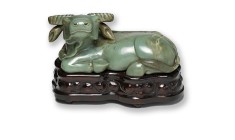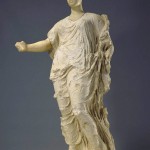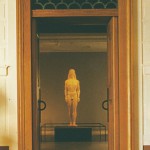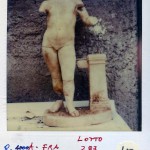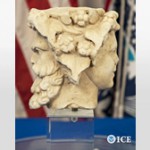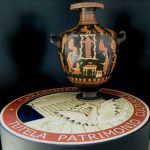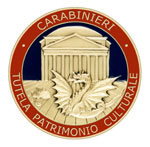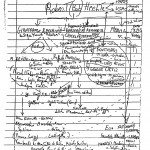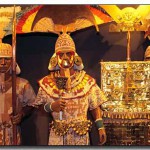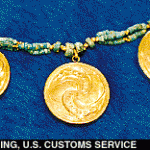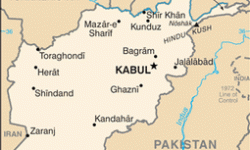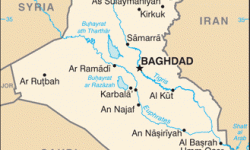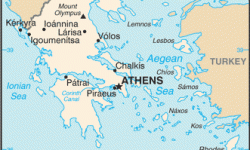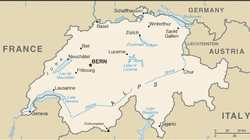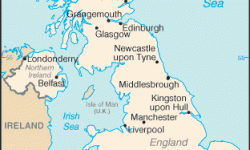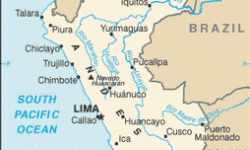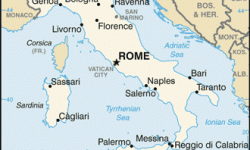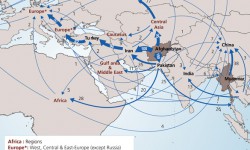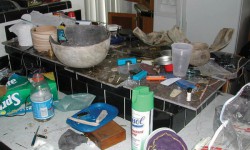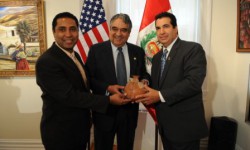Media Investigations
Author: Neil Brodie
Last Modified: 06 Mar 2014

Some of the most informative studies of the traffic in cultural objects have been conducted by investigative media.
Qualitative approaches to the trade in cultural objects have ranged from undercover investigations conducted by journalists in print and on screen, through to more standard ethnographic research undertaken by academic archaeologists, anthropologists and criminologists. By and large, media investigations have focused on the dealers, rich collectors, and large museums that constitute the demand-side of the trade, while academic research has concentrated more on the supply-side, on the socio-economic and historical circumstances of the people who conduct illegal digging or who fake objects, and their lifestyles. Presumably, one reason for this apparent division of labour is that media investigations are audience-led, and the audience has a prurient interest in the misdemeanours and undoings of the rich and powerful. Another reason must be the power gradient that is a defining feature of the trade. Rich private collectors and museums can repel academic enquiry quite easily by refusing to cooperate or by mobilizing a legal deterrent. Simple threats of libel action are usually enough to deter inquisitive though financially straitened academics. The financial and legal resources of media companies often allow them to take a more robust attitude towards such intimidation.
The most persistent and arguably most revealing investigation of the antiquities trade has been by author and journalist Peter Watson. Watson’s research started in 1991 when he came into possession of three suitcases full of internal documents from Sotheby’s auction house recording what appeared to be systematic malpractice. Many of the documents were concerned with antiquities sales, and they prompted Watson to investigate an Italian antiquities dealer named Giacomo Medici and an Indian dealer Vaman Ghiya, who were both using front companies in Geneva to consign allegedly looted material to Sotheby’s, with the apparent connivance of Sotheby’s staff. Watson’s research was published in a book (Watson 1997) and featured in three television programmes. It exploded the myth that so-called reputable institutions such as Sotheby’s were not involved in trading in illicit material, and demonstrated conclusively that there was a seamless interface between the legal and illegal antiquities markets. Following Watson’s revelations, Sotheby’s announced its decision to stop holding regular antiquities sales in London, senior staff in the London antiquities department left the company (Farrell and Alberge 1997), and the final ‘Antiquities’ sale was held in November 1997.
Watson’s research brought him into contact with the Italian Carabinieri, who were themselves investigating Medici. They pooled information and the Carabinieri allowed Watson to report on their investigations (Watson and Todeschini 2007). The scope of the Carabinieri investigations broadened to include a large part of the illegal Italian antiquities trade, and ultimately charges were brought against dealers Giacomo Medici, Gianfranco Becchina and Robert Hecht. The accumulating evidence also implicated Marion True, then Curator of Antiquities at the J. Paul Getty Museum. More evidence regarding the Getty’s involvement with the illicit trade came to light in Los Angeles, where the journalists Jason Felch and Ralph Frammolino of the Los Angeles Times obtained more than 1,000 pages of internal Getty documentation. This documentation confirmed some of the Italian prosecutors’ suspicions of institutional malpractice, and more generally offered a unique unexpurgated insight into the internal politics of a major art collecting museum (Felch and Frammolino 2011). Other journalists have taken a closer look at Medici (Silver 2009) and Becchina (Isman 2009; 2011), and the extension of the ‘network’ into Greece (Αποστολίδης 2006;. Ζηργάνος 2005, 2006a, 2006b; Anemon 2006).
Investigations of the type conducted and reported upon by Watson, Felch, Frammolino, Silver, Isman and others have been important in exposing the true nature of the illicit trade in cultural objects, but also in elucidating some of the finer details of its operation. Watson was able to report upon the work of official Italian investigator Maurizio Pellegrini, for example, to show how illegally-obtained artefacts were passed from suspect dealers (such as Medici) through more seemingly respectable intermediaries (Hecht) to render them more palatable for acquisition by museums (such as the Getty). Pellegrini termed this process ‘triangulation’ (Watson and Todeschini 2007: 77). Pellegrini also discovered how whole frescoes could be broken into pieces before being fed onto the market (Watson and Todeschini 2007: 69-72), and how Medici would launder objects by consigning them for sale at Sotheby’s and then buying them back himself (Watson and Todeschini 2007: 73), thus giving them a provenance and an appearance of legitimacy.
Investigative reporter Nikolas Zirganos took a special interest in the activities of British antiquities dealer Robin Symes, and was present in April 2006 when Greek police raided a villa on the island of Schinoussa belonging to Symes and his deceased partner Christos Michaelides. Zirganos described how the villa on Schinoussa was used for what he described as the ‘preparation and closing of deals’ (Zirganos 2007: 318). The villa was in effect a social and commercial hub, where Symes and Michaelides would entertain archaeologists, museum curators, conservators and wealthy collectors to gossip about the market and what was available for purchase, and to arrange sales. Thus, it was possible for a customer to purchase an illicit artefact on Schinoussa without actually coming into contact with it. The artefact would be smuggled separately to Switzerland, where the customer could take possession of it.
In 1990, the television documentary The African King, produced by anthropologist Walter van Beek, exposed in dramatic fashion the destruction wrought on Malian cultural heritage by the unprincipled operation of the ‘art market’, considered holistically as comprising the European collectors, dealers, museum curators, art historians and scientists interviewed on screen (McIntosh 1996). One person interviewed was Michael Tite, then director of the University of Oxford’s Research Laboratory for Archaeology and the History of Art (RLAHA), who offered some financial justifications for the laboratory’s commercial practice of using its thermoluminescence (TL) dating facility to authenticate unprovenanced (presumed looted) terracotta statues from Mali (McIntosh 1996: 57-58). The professional outcry that followed this televised statement caused the laboratory to announce in 1992 that it would in future restrict its TL dating to objects from legitimate excavations or collections, or that are subject to police investigations or litigation (Inskeep 1992). In a series of articles, the journalist Michel Brent picked up where The African King left off, continuing to explore the invidious relationship between Mali and the art market (Brent 1994, 1996). He has also published an important study of fakers in Mali and their terracottas, underlining the earlier importance of the RLAHA, and discovering that other TL laboratories had moved to fill the gap left in the authentication market by the RLAHA’s withdrawal in 1992 (Brent 2010). In any case, Brent believed the reliability of TL dating to be limited, and left the impression that there are question marks hanging over the authenticity of many pieces, including a pregnant ewe on display at the Boston Museum of Fine Arts (Brent 2010: 28).
Other important media investigations into the demand-side of the trade include the February 2000 Swedish Channel 10 documentary On the Trail of Tomb Robbers, and the September 2004 Norwegian Broadcasting Corporation (NRK) programme The Manuscript Collector. On the Trail of Tomb Robbers was based on the original research of archaeologist Staffan Lundén, and used a hidden television camera to expose the involvement in the illegal market of a diplomat, a museum director and an art dealership, despite their public protestations to the contrary (SVT 2000; Doole 2000, 24-27; Lundén 2004). Again, like Watson’s work, this programme documented the extent to which the antiquities market involves apparently honest and reputable individuals in criminal activities. It triggered a public debate within Sweden and throughout Scandinavia more generally which culminated in the ratification of the 1970 UNESCO Convention by Sweden and Denmark in 2003, and Norway in 2007.
The Manuscript Collector investigated the ancient manuscript collection of Norwegian businessman Martin Schøyen (NRK 2005; Lundén 2005), and revealed the degree of scholarly involvement in his activities. The programme questioned the possible illegal Iraqi origin of 654 Aramaic-inscribed incantation bowls that were being held at University College London (UCL) for study by a scholar from the Hebrew University of Jerusalem, and traced what it alleged were smuggled Kharosthi manuscript fragments from Pakistan to the ownership of the British Library. The programme further claimed that the British Library’s acquisition of these manuscript fragments in 1994 led to an explosion of interest in ancient manuscripts, which encouraged Schøyen between 1996 and 1998 to buy 10,000 Buddhist manuscript fragments from a London dealer that had probably been smuggled out of Afghanistan. The British Library refused to answer the programme’s allegations. UCL set up a committee of enquiry into the provenance of the incantation bowls to decide whether they should be returned to Schøyen or to Iraq. The bowls were returned to Schøyen in 2007.
Although journalists and authors have focused most of their attention on the demand-side of the trade, they have sometimes taken an active interest in the motivations and actions of looters and diggers, though, interestingly, usually developing a more negative perspective than the academic one. Anthropologist Kimbra Smith’s (2005) sympathetic treatment of traditional looting in north Peru, for example, might be contrasted with author Roger Atwood’s (2004: 229-240) more acerbic account of criminal gangs operating in the same area, made as part of a more wide-ranging investigation into the trade in Peruvian cultural objects. Similar ground had been covered by Kirkpatrick (1992); both authors taking the looting of Sipán as their starting point. Zirganos has reported on the history of Aidonia, a small village in southern Greece (Waxman 2008: 347-348). In 1976, a Mycenaean (late bronze age) cemetery was discovered close to the village. Two rival gangs fought a gun battle over possession of the cemetery, and for several months afterwards the victors dug it out. By 1978, the cemetery was empty, and in the aftermath of the violence the village community began to disintegrate, until by 2007 the only house still occupied was that belonging to the family of the looters.
Joanne Farchakh Bajjaly (2008a; 2008b) is one of the few people to have visited archaeological sites in Iraq (in May 2003 and February 2004) while they were being looted in the aftermath of the 2003 Coalition invasion. She reported from Di Qar district in southern Iraq that hundreds of farmers had left their families to live on sites such as Umma, Larsa, and Jokha while digging illegally. The looting was tolerated and even supported by some religious, political and tribal leaders as a way of earning money in the war-torn economy. Farchakh Bajjaly argued that such looting would only stop when Iraq’s rural economy was rejuvenated. Nevertheless, while drawing attention to the economic deprivation that was driving the looting, she also described the associated violence. Armed gangs of looters and dealers controlled the main roads leading to sites that were being dug, and in 2005, eight Iraqi customs officers who had arrested some antiquities dealers were murdered and their bodies were burnt and thrown in the desert to act as a warning to others. First-hand reporting from war zones such as Iraq on the looting and trade of cultural objects is scarce because it is dangerous. Journalist and filmmaker Micah Garen was also investigating the trade in Iraq until August 2004, when he was kidnapped in Nasiriyah. He was released unharmed two weeks later (Garen 2004; Garen and Carleton 2007).
References
Anemon (2006), Network: The Illicit Trade of Antiquities, TV programme (Athens: Anemon productions).
Αποστολίδης, Ανδρέας (2006), Αρχαιοκαπηλία και Εμπόριο Αρχαιότητων (Athens: Agra).
Atwood, Roger (2004), Stealing History (New York: St. Martin’s Press).
Brent, Michel (1994), ‘The Rape of Mali’. Archaeology, (May/June), 26-35.
Brent, Michel (1996), ‘A view inside the illicit trade in African antiquities’, in Peter R. Schmidt and Roderick J. McIntosh (eds.), Plundering Africa’s Past (London: James Currey), 63-78.
Brent, Michel (2001), ‘Faking African art’, Archaeology, (January/February), 27-32.
Doole, Jenny (2000), ‘TV review: On the Trail of Tomb Robbers (Channel 10, Sweden)’, Culture Without Context, (7), 24-27.
Farchakh-Bajjaly, Joanne (2008a), ‘Will Mesopotamia survive the war? The continuous destruction of Iraq’s archaeological sites,’ in Peter G. Stone and Joanne Farchakh-Bajjaly (eds.), The Destruction of Cultural Heritage in Iraq (Woodbridge: Boydell), 135-142.
Farchakh-Bajjaly, Joanne (2008b), ‘Who are the looters at archaeological sites in Iraq?’ in Lawrence Rothfield (ed.), Antiquities Under Seige. Cultural Heritage Protection After the Iraq War (Lanham: AltaMira), 49-56.
Felch, Jason and Frammolino, Ralph (2011), Chasing Aphrodite: The Hunt for Antiquities at the World’s Richest Museum (New York: Houghton Mifflin Harcourt).
Garen, Micah (2004), ‘The war within the war’, Archaeology (July/August), 28-31.
Garen, Micah and Carleton, Marie-Helene (2005), American Hostage (New York: Scribner).
Inskeep, Raymond (1992), ‘Making an honest man of Oxford: Good news for Mali’, Antiquity, 66, 114.
Isman, Fabio (2009), I predatori dell’arte perduta. Il saccheggio dell’archeologia in Italia (Rome: Skira).
Isman, Fabio (2011), ‘The masterpiece sold for $1,500 and a suckling pig”, Art Newspaper, (225), 50-53.
Kirkpatrick, Sidney D. (1992), Lords of Sipan (New York: William Morrow).
Lundén, Staffan (2004), ‘The Scholar and the market,’ in H. Karlson (ed.), Swedish Archaeologists on Ethics (Lindome: Brocoleur), 197-247.
Lundén, Staffan (2005), ‘TV review: NRK (Norway) Skriftsamleren [The Manuscript Collector]. Culture Without Context, no. 16, 3-11.
McIntosh, Roderick J. (1996), ‘Just say shame: Excising the rot of cultural genocide’, in Peter R. Schmidt and Roderick J. McIntosh (eds.), Plundering Africa’s Past (London: James Currey), 63-78.
NRK (2005), Skriftsamleren [The Manuscript Collector], TV programme, 7, 14 September (Oslo: Norwegian Broadcasting Corporation).
Silver, Vernon (2009), The Lost Chalice (New York: William Morrow).
SVT (2000), I gravplundrarnas spar [On the Trail of the Tomb Robbers], TV programme, 29 February (Stockholm: Sveriges Television).
Watson, Peter (1997), Sotheby’s: Inside Story (London: Bloomsbury).
Watson, Peter and Todeschini, Cecilia (2006), The Medici Conspiracy (New York: PublicAffairs).
Waxman, Sharon (2008), Loot: The Battle over the Stolen Treasures of the Ancient World (New York: Times).
Ζηργάνος, Νικόλας (2005), ‘Υπόθεση Γκετί’, Εψιλον, (757), 16 October, 46-58.
Ζηργάνος, Νικόλας (2006a), ‘Ραντεβού με κλέφτες και αστυνόμους’, Εψιλον, (775), 19 February, 22-34.
Ζηργάνος, Νικόλας (2006b), ‘Σκάνδαλο Γκετί Νο 3’, Εψιλον, (788), 21 Μay, 24-60.
Zirganos, Nikolas (2007), ‘Operation Eclipse,’ in Peter Watson and Cecilia Todeschini, The Medici Conspiracy (New York: PublicAffairs), 306-324.
